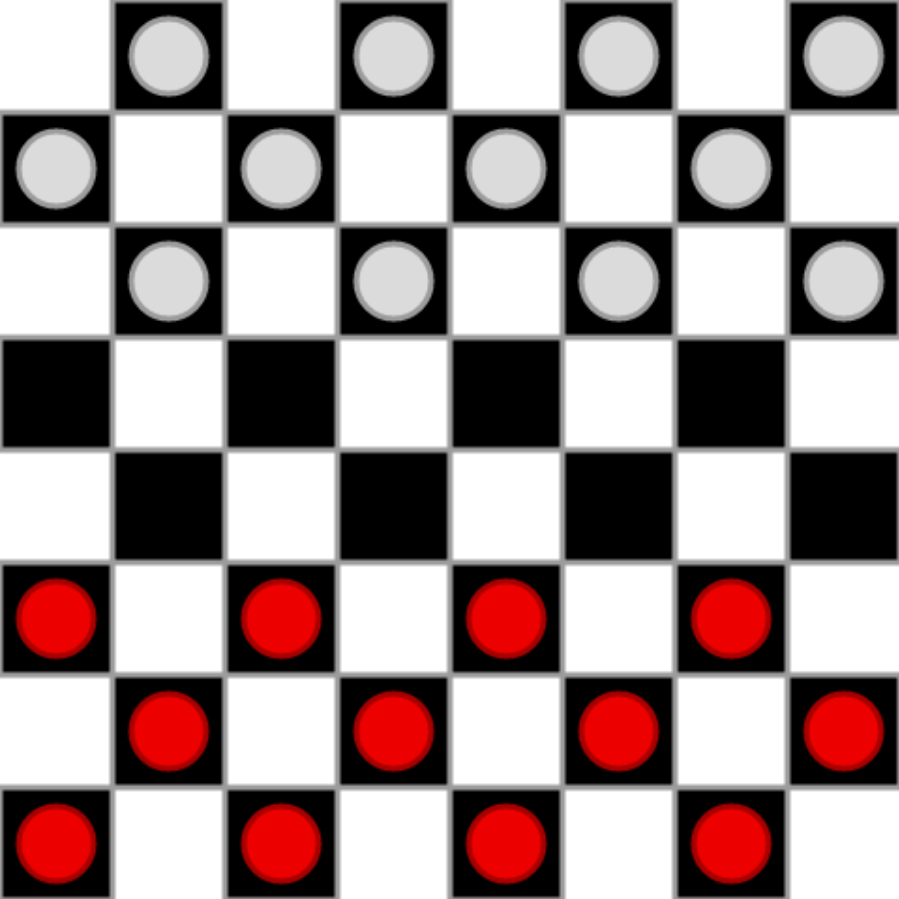I wrote a checkers game with a computer AI player that runs locally in the browser using compiled Rust + WASM. An AI can take a long time to make a move if you let it look many moves in the future, using compiled Rust allows a smarter computer player than if the player were run in Javascript.
I wanted to play with Rust + WASM to see what could be done in the browser without Javascript, previously I knew little about either beyond the basic tutorials. In my masters AI module, I studied adversarial game models including the MiniMax algorithm. This algorithm generates a tree of possible moves and compares scores to decide which move should be made. Generating this tree can be expensive as it explodes exponentially, I thought it would be a good candidate to try and speed up using compiled Rust over interpreted Javascript. If I’m honest, I’m not crazy passionate about checkers but I thought it would be a cool application of some of my uni theory.

Standard checkers board rendered on an HTML canvas using Rust
The project took about 3 weeks off and on. Initially, I wanted to model the game board without the off-diagonal pieces that aren’t played on. This would have helped reduce the memory footprint of each board which would be ideal when we are going to be handling a lot. Unfortunately, this significantly increased the complexity of modelling piece movements - after some trial and error I resorted to just modelling the whole board.
The MiniMax algorithm was also a bit of a pain. The algorithm relies on a tree structure for which I used the IndexTree crate. Instead of using pointers between nodes that could rely on unsafe code, this library instead relies on a single backing array of nodes. Working out how to effectively create, populate and traverse the trees while following the borrow checker’s rules was a good test.
Try it out below… Link to heading
Under the hood Link to heading
The performance of the game and the AI was pretty impressive. This was also without any Alpha-Beta pruning, a method to reduce the number of tree nodes that need searching. Below are the results of a basic benchmark for expanding the MiniMax tree to given depths both in development mode and release mode.
| Tree Depth | Dev Mode (Unoptimised) | Release Mode (Optimised) |
|---|---|---|
| 1 | 0.86 ms | 0.1 ms |
| 2 | 4 ms | 0.26 ms |
| 3 | 30 ms | 2 ms |
| 4 | 223 ms | 15 ms |
| 5 | 1,798 ms | 116 ms |
| 6 | 14,379 ms | 1,006 ms |
| 7 | 120,534 ms | 9,028 ms |
Time to generate a move with trees of various depths (Chromium/Linux) Link to heading
At first, the AI was intimidatingly good. In fairness I am far from a checkers expert, I don’t know how to play particularly “tactically” or anything like that. Something that I found interesting was that increasing the search depth did not necessarily make the AI feel harder to play. Setting the depth to 1 or 2 made the other player very aggressive, taking any piece it could. When increasing the search depth, the player wouldn’t necessarily just take any piece when able to, but it was good at blocking moves the human may try to make.
In order to make the game more fun to play, I introduced a further parameter, the perfect chance. Instead of always following the move that the MiniMax algorithm suggested, instead it would sometimes pick a random move instead. This was decided randomly turn-by-turn using a threshold between 0 and 1. This threshold was presented as a difficulty slider within the UI and made the game much more fun to play.
Ultimately, I was pretty happy with the project and it can now be used as a testbed for trying out new Rust, WASM and Javascript skills that I learn.
